
Siberian iris
The Siberian iris belong to sub-genus Limniris. The major species of this group, Iris sibirica, is found over the range extending from the Alpine slopes into the shores of Lake Baikal. It does not occur in the southern steppe regions but in the European part of the USSR, as if crossing the steppes, it grows in the high-mountaneous meadows of the Caucasus. Iris sibirica is moisture-loving, therefore, it often grows in bottomland meadows, small insular birch groves and forest margins. In late May or early June a crown of pale-blue or deep violet-purple, sometimes white flowers on slender stems hang over the narrow dark-green foliage.

70. 'Olimpijskaja Snezhinka'
In eastern Siberia and the Primorye Territory this species is replaced by Iris sanguinea. They are easily crossed in nature, producing transient forms. The typical plants are well distinguishable: in Iris sibirica, the blades of the falls are oblong, seed pods short, their length being slightly more than the width, the seeds light-grey and spathes pale-green, while in Iris sanguinea the blades of the falls are wide and rounded, the length of the seeds 2 to 3 times more the width, the seeds dark-brown and the spathes in reddish shade.
Outside the USSR, I. sanguinea occurs in Korea, northern Mongolia, north-eastern China and Japan. Its southern forms are especially beautiful. These were chiefly used in hybridization to develop cultivars of Siberian iris.
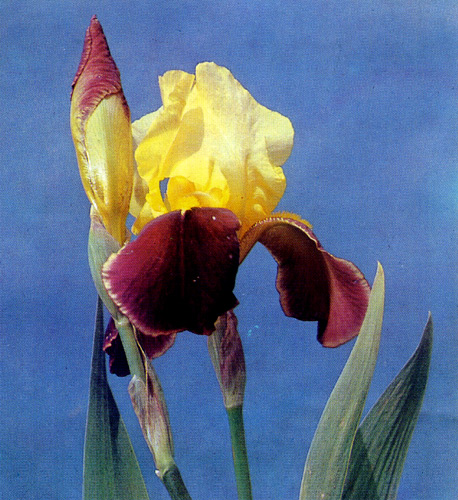
71. 'Kosmonavt Remek'
In 1960 within the American Iris Society a separate section was established by the members who devoted their efforts to hybridization of Siberian iris through colchicine treatments and interspecific crosses. Closely related species from China and Japan were involved. To obtain polyploid large-flowered forms, the germinating seeds were treated with colchicine. The success was greater than one might expect it. Thus, in the 1960s—1970s arose a series of magnificent Siberian cultivars in the USA.
In England, the work by M. Brummit with colchicine treatments of germinating seeds was particularly successful. Among an excellent series of polyploid cultivars of Siberian iris 'Cambridge' is outstanding. It was the winner of the Dykes Medal which before that, was traditionally awarded only to best new cultivars of bearded iris.
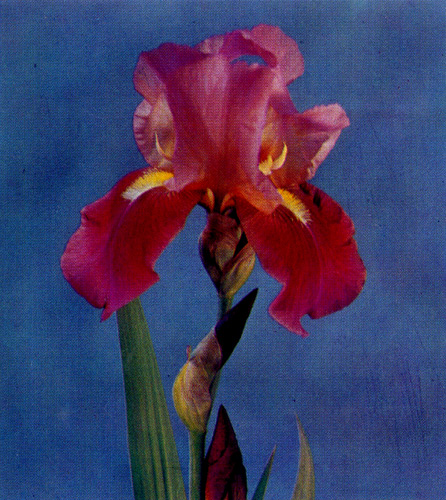
72. 'Festivalnyi'
The colour range of the two species varies within violet-blue. Therefore, three species originating in the mountaneous regions of China are important for breeding purposes. They are Iris chrysographes with flowers of dark cherry-red tones, I. forrestii and Iris wilsonii with pale-yellow flowers. These species carry larger sets of chromosomes (2n=40) compared to Iris sibirica (2n=28). Nevertheless, as the experience of American breeders shows, the hybrids between them are possible. There have already been developed golden-yellow Siberian iris such as 'Butter and Sugar' or 'Forrest Scion'. The first one with creamy yellow standards and style branches and deep golden-yellow falls is especially lovely.
The remaining four species of Siberian iris, I. delavayi, I. bulleyana, I. dykesii and I. clarkei with bluish-violet flowers are of no interest for iris breeders. Also, these are rare species growing in almost inaccessible regions.
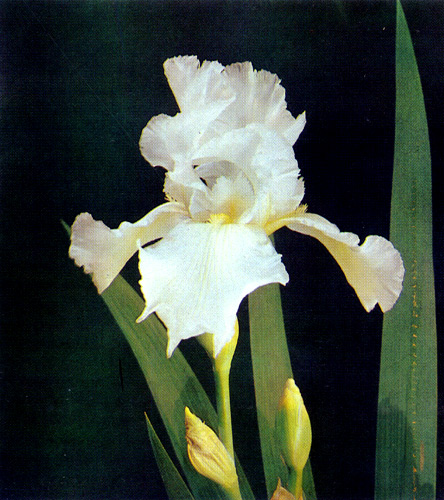
73. 'Pervyi Sneg'
In the northern and central parts of the Soviet Union the Siberian iris are unsurpassed ornamental herbaceous plants for their easy care and frost resistance. They are widely used for planting around trees and shrubs, in masses in the lawns or around ponds.
For these purposes another representative of our northern flora, Iris setosa, is also good. Compared with Iris sibirica, it has wider (2 to 2.5 cm) foliage, underdeveloped falls (therefore the flowers seem tripetalous) and swollen pods. Iris setosa is dispersed in eastern Siberia, the Primorye Territory and Kuril Islands. It is extremely frost-resistant, and due to it, this species spreads along the bottomland of the Lena and Kolyma Rivers, extending beyond the Arctic Pole and approaching close to the Arctic Ocean coast. In Magadan and Vladivostock it grows in town plantings.
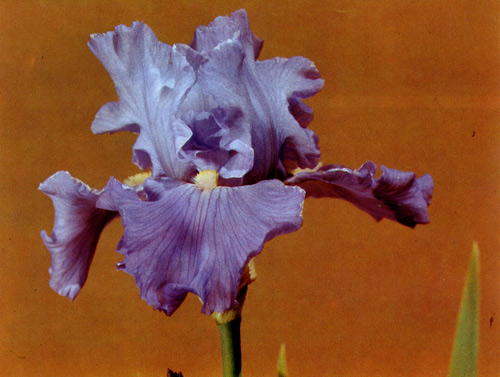
74. 'Babbling Brook'
Modern large-flowered Siberian iris with bright colours have appeared in the USSR in the collections of botanical gardens and of amateurs quite recently.
The recommended cultivars are: blue — 'Mountain Lake', 'Cambridge', 'Gatineou'; dark-violet with reddish shade -, 'Fialka', 'Tropic Night', 'Eric the Red', 'Tycoon', 'Royal Ensign', 'Court Violate'; white — 'Schneekonigin', 'Snow Queen', 'White Swirl'.
The Siberian iris are not exacting as to soil conditions, but humus, sufficiently moist, neutral or mildly acid soils are preferable. They do well in sunny situations but also tolerate some shade. The clumps are divided and transplanted both in early spring and late summer or in early autumn. In the north-western regions of the European part of the USSR the best time is approximately 2 or 3 weeks after bloom, during the period of active root growth.
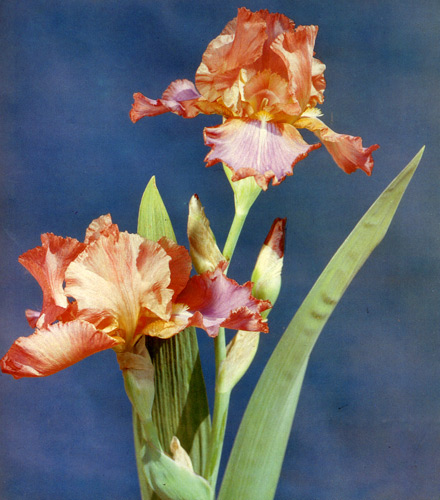
75. 'Baccarat'
In transportation of the plant material care should be taken that the rhizomes do not dry out. The plants can be grown in the same place, without deterioration in their decorative qualities, and with proper care, for 5 to 7 years and more. The seeds sown in late autumn show good germination. The seedlings come into bloom the second or third year.
The list of pests and diseases is negligible. Worms of iris moth seem to be the only serious pest of the iris. They damage leaf bases and flower stalks. The pest is especially dangerous in years with dry spring and early summer. Control measures include granosan treatments of the radical part of the clumps in early spring.
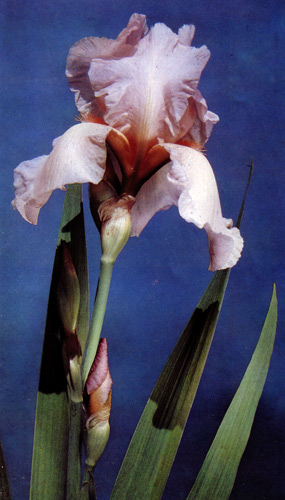
76. 'Hawaiian Breeze'
|
ПОИСК:
|
© FLOWERLIB.RU 2001–2022
При использовании материалов активная ссылка обязательна:
http://flowerlib.ru/ 'Библиотека по цветоводству'
При использовании материалов активная ссылка обязательна:
http://flowerlib.ru/ 'Библиотека по цветоводству'